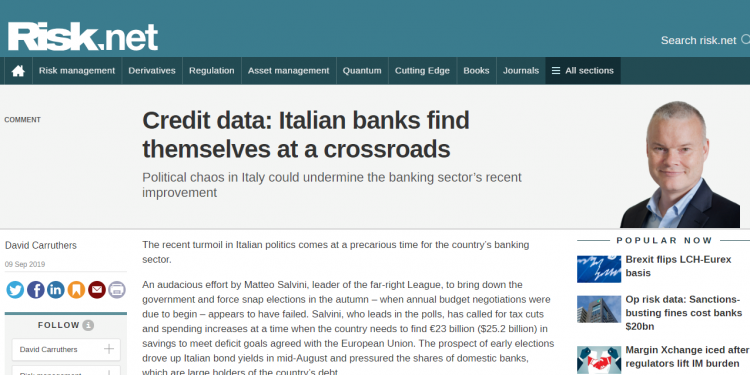
The recent turmoil in Italian politics comes at a precarious time for the country’s banking sector.
An audacious effort by Matteo Salvini, leader of the far-right League, to bring down the government and force snap elections in the autumn – when annual budget negotiations were due to begin – appears to have failed. Salvini, who leads in the polls, has called for tax cuts and spending increases at a time when the country needs to find €23 billion ($25.2 billion) in savings to meet deficit goals agreed with the European Union. The prospect of early elections drove up Italian bond yields in mid-August and pressured the shares of domestic banks, which are large holders of the country’s debt.
The banking sector can ill-afford another political crisis. Italian banks have spent the past three years raising capital and restructuring bad loans. Those efforts appeared to have reached a turning point last summer. The ratio of non-performing loans in Italy has been cut in half since peaking at 18.1% in 2016. Credit risk in the banking system, which increased by nearly 20% from January 2016 to July 2018, has improved by 8% since then. More than 90% of Italian banks currently sit on the boundary between investment and non-investment grade ratings.
In this series of monthly articles from Risk.net, David Carruthers, head of research at Credit Benchmark, examines the credit outlook for Italian banks in the midst of political upheaval. Also this month, a look at the credit trends and distributions of the top 500 global companies, as well as a focus on top German and French companies and their credit performance in the face of Euro-specific headwinds. Oil & Gas trends for US, UK and the EU are also highlighted in this month’s column.
Read the full article using the below link:
View original article (external link)